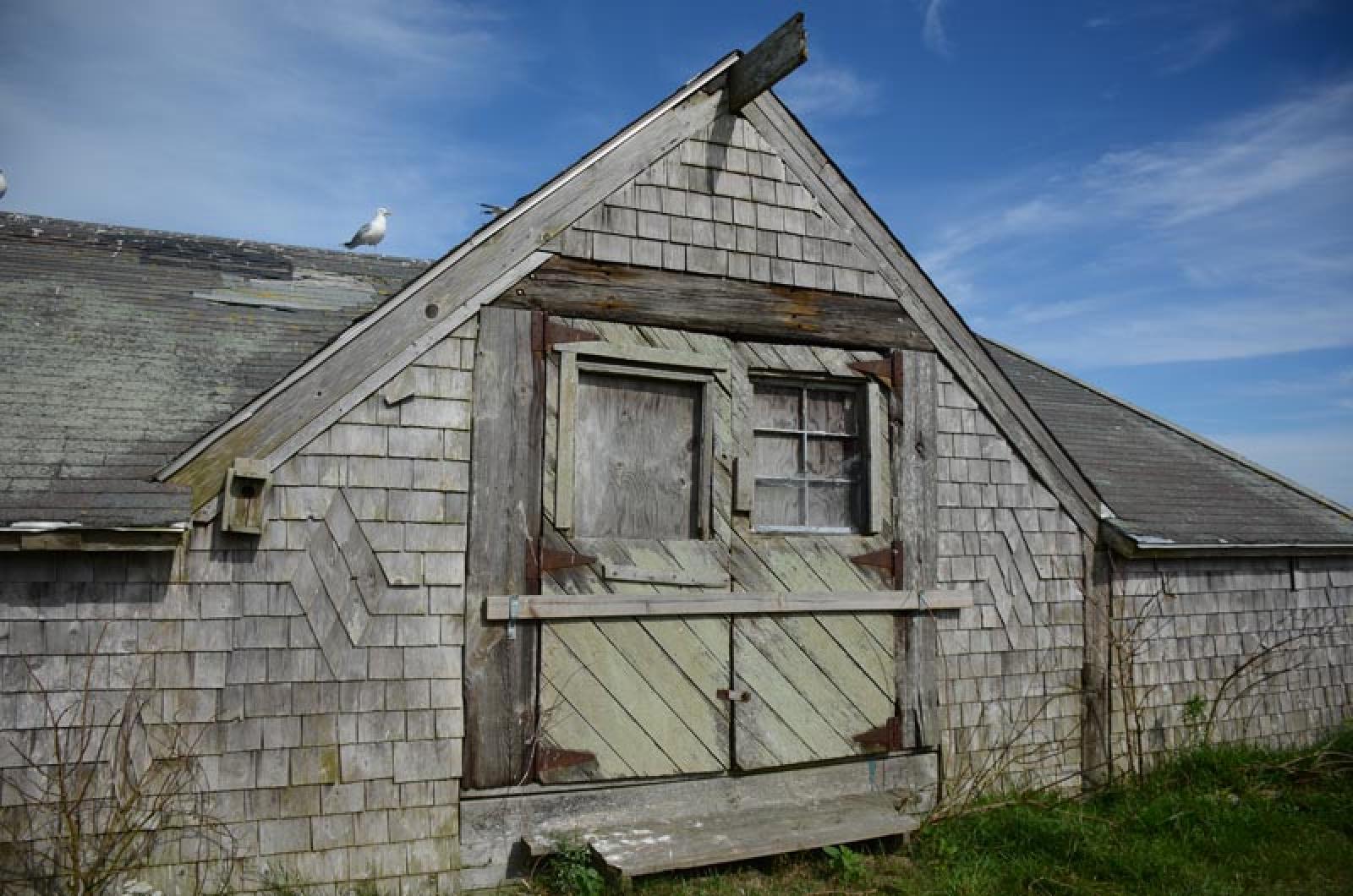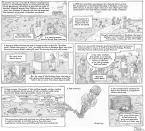If you believe that Chilmark Store pizza costs more per square inch than Chilmark real estate, then it shouldn’t be hard to make the leap to the premise that inch for inch, the 75 acres that make up Penikese island have more history than any other place of its size in the country.
Just a nubbin in the Elizabeth Islands which are the Vineyard’s little sisters in Buzzard’s Bay, Penikese has seen more attempts at understanding and fixing broken parts of nature and humanity than any little place I know.
The island’s bad mojo possibly can be traced back to the first time a white man set foot on the island in 1602. That was when Bartholomew Gosnold landed there, frightening four Wampanoag hunters into the woods whereupon the Englishmen promptly stole their canoe. The Wampanoags can hold a grudge for a very long time — generations, in fact. Just like Cuttyhunkers.
In the 1700s Penikese was the summer vacation home of businessman John Anderson. In 1783 he gave it to Louis Agassis, a Swiss-American naturalist who turned it into a school for the study of nature. A granite carving on the island is testament to his effort. When he died the school was taken over by his sons but promptly burned in a fire. Some of the students went on to create the Marine Biological Laboratory in Woods Hole. For the next 20 years, the island was used for summer sheep grazing, as was most of Cuttyhunk.
In 1904 Penikese was bought by the state of Massachusetts, and amid widespread opposition from the mainland populace, the island was turned into a leper colony and hospital run by Dr. Frank Parker and his wife Marion. Few stories are known about the people who lived there during that time. In 1921, after 16 years of operation, the hospital was closed and the island was burned and dynamited. A few shells of concrete buildings are all that remain today of the leper colony. There was the windward side — called “the other side” — which had the laundry and small houses used by the patients. A ghostly cemetery on the hill separated the patients from the staff and hospital on the leeward side.
In 1973 George Cadwallader, a disabled Viet Nam veteran, and Dave Masch, a renaissance man of the type that came out of the sixties, founded the Penikese Island School. The school was a halfway house for troubled boys who got to do some hands-on farming and boatbuilding with the goal of rebuilding their self-esteem. The school saw resistance from the Cuttyhunkers, who were convinced they would have to keep guns loaded, or worse, begin locking their doors (which would require installing locks). One time George Cadwallader came to Cuttyhunk to attend a meeting at the town hall. A steep walk was required up Broadway from the fish dock where he had tied up his boat. George, who had a significant limp, was offered a ride by a Cuttyhunker who was a children’s book author. When the driver got to the top of the hill and learned the identity of his passenger, he threw the car into reverse, backed all the way down to the dock and told him to get out and walk.
To this day the only incident I know of on Penikese was an attempted escape in the night by one boy in a 14-foot dory. The boy was found in the morning doing doughnuts in the middle of Buzzard’s Bay, having lost one of his oars.
The success or failure of the school remains a subject for debate. I once asked George about the recidivism rate, and he said it was about 80 per cent. I then asked him what the national rate was, and the answer was the same, about 80 per cent.
My first contact with the school was around 1981, soon after I had moved to Cuttyhunk. Since I had been raised in an orphanage myself and had been a youth worker in Providence, R.I., and Columbus, Ohio, I was eager to help if I could. At the time the school was only used in the summer for the students, logistics being difficult in the winter. Because there were animals that needed tending all year long, in the off-season people were recruited to stay on the island for a week at a time. There were many volunteers, including adventurous hippies and recovering types from the Woods Hole area who thought they could go out there to get their heads together. The only rule was that they stay in touch with me on Cuttyhunk via VHF radio once a day, in the evening. Penikese in the middle of January in the middle of a three-day northeaster is not an ideal place to get your head together. On one occasion a young woman was dropped off just before a storm blew up. I heard nothing from her for a couple of days. Worried, I got into my skiff and battled my way over there. I found her in the middle of the great room under a polyethylene and driftwood pyramid with a thunder jug, some water and some prayer beads, but no radio. It was freezing but she was afraid to leave the spiritual protection of the pyramid to keep the wood fire going or retrieve the forgotten radio. She was relieved of duty and I took over the care of the animals for awhile.
Then there was the time George called and asked me to come over and euthanize a 600-pound boar who was unwell. Apparently the boar’s testicles had grown to the size of beach balls. They took this as a sign of something very bad and asked me to put him out of his misery. I said I would do it. But alas, when I went over to take a look at the boar he was already dead. Thank you, God, but what was I going to do with a 600-hundred pound dead pig? Nothing. Flee! That about did it for me.
The school is now ready to flourish again, guided by new people, new concepts and renewed energy. I wish them well.
Penikese is lovely to visit in summer and fall. Tranquil and beautifully desolate, it has a 360-degree view of ocean, mainland, bay, islands and vessels of all kinds. On a beautiful summer day, it’s hard to imagine that there has been so much pain passing over the island for such a long time.
But I don’t go to Penikese in summer. I go when it’s cold and wet and lonely and dark, similar to the place my mind goes to every once in awhile. I sit in the cemetery which is on a beautiful knoll overlooking the world and cradles the bodies of 14 lepers. They came from all over the country and beyond, people who were ripped from their homes and families and brought to this desolate place to watch pieces of themselves disintegrate until there weren’t enough pieces left to sustain life. Finally they died, without family, and were buried by strangers in a strange place.
I visit the little concrete shells where they lived and try to imagine what they were feeling as they gazed across the bay to the mainland, where people lived normal lives with their families. I know it had to feel far worse than what I felt as a child, and I am filled with gratitude for my family and a life that lifted me out of darkness. Penikese does that for me.









Comments
Comment policy »